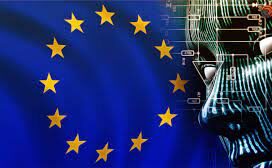After over two years of intense negotiations, the European Union has reached a landmark agreement on the Artificial Intelligence (AI) Act – the first-ever effort to comprehensively regulate AI systems at the supranational level. As AI technologies continue their rapid advancement, promising tremendous economic and social benefits but also raising concerns over potential risks, this legislation aims to establish a harmonized, risk-based framework governing the development and use of AI across the 27 member states.
At its core, the AI Act adopts a calibrated approach, imposing different levels of obligations based on the perceived risk that a given AI system poses to people’s fundamental rights and safety. Some practices deemed to present unacceptable risks are outrightly banned, such as systems deploying subliminal manipulation techniques, exploiting vulnerabilities of children or disabled persons, or enabling indiscriminate biometric surveillance.
On the other end of the spectrum, AI systems deemed as low or minimal risk – such as spam filters or basic chatbots – will remain largely unregulated beyond existing rules like GDPR. But systems in the middle ground are classified as “high-risk”, which could adversely impact areas like healthcare, employment, education or law enforcement if they fail or are used improperly, and face strict obligations.
Providers of high-risk AI must undergo rigorous conformity assessments before their products can hit the EU market, meeting robust requirements around data governance, risk management, human oversight and transparency. Their systems must be technically robust, secure and respectful of fundamental rights like privacy and non-discrimination. Some high-risk uses, like remote biometric identification by law enforcement, are permitted only in carefully circumscribed cases for serious crimes or threats.
The legislation breaks new ground in its specific provisions targeting so-called “general purpose” AI models like ChatGPT – adaptable foundational models trained on vast datasets that can be fine-tuned for diverse downstream applications. All such general purpose models must maintain documentation, implement watermarking and other copyright compliance measures, and make model information public in line with transparency requirements.
But models deemed to present potential “systemic risks” due to their scale and capabilities face even more stringent obligations around risk assessment, incident reporting, and corrective actions. Effectively, the EU is seeking to get ahead of concerns around potential negative societal impacts as these powerful AI systems become more prevalent and ubiquitous across the economy.
To support responsible innovation while upholding high standards, the Act establishes an AI regulatory “sandbox” framework, allowing companies to temporarily test prototypes in real-world settings under close supervision before full deployment. Member states must set up these sandboxes as controlled testing environments at the national level.
Critically, the AI Act charges the European Commission and newly created bodies like the European Artificial Intelligence Board and AI Office with maintaining updated lists of prohibited practices and high-risk applications as the technology evolves. This “future-proofing” aims to keep the law relevant amid the breakneck pace of AI breakthroughs.
Alongside harmonizing rules across the single market, the landmark regulation is intended to position the EU as a trusted global leader in ethical, human-centric AI development aligned with democratic values. By balancing innovation and protection at the supranational level, the hope is to foster an ecosystem for responsible AI that enhances competitiveness while safeguarding rights.
Of course, the Act’s proof will be in its implementation, which promises to be highly complex given AI’s multifaceted nature and the need for coordination between numerous regulatory agencies. Major battles already loom around the scope and interpretation of key provisions, requirements, standards and enforcement details still being hashed out.
For one, AI providers large and small are concerned about excessive compliance costs and unclear risk categorizations stifling innovation, while civil society groups argue the restrictions don’t go far




